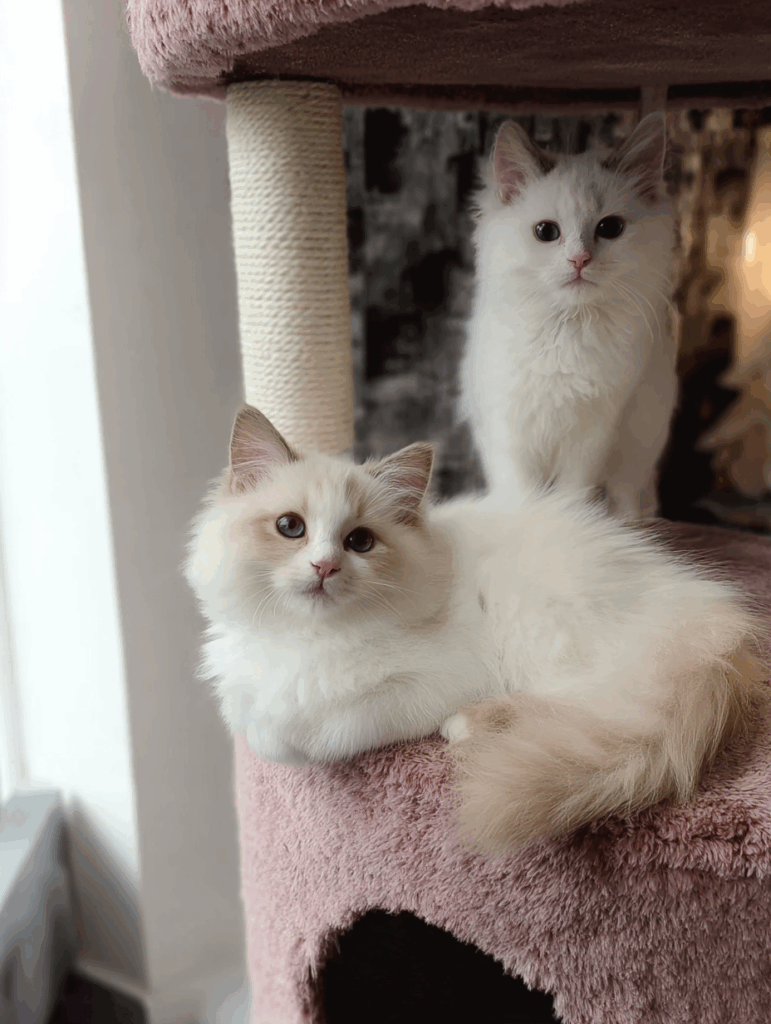
Lilac Ragdoll Kittens for Sale: Complete Guide to Color, Temperament, Pricing, and How to Reserve One
Lilac Ragdoll kittens attract buyers who want rare colors and calm temperaments. These kittens offer soft pastel coats, deep blue eyes, and sweet personalities. Families often choose lilac Ragdolls for their gentle nature and elegant appearance. Demand grows each year, but supply stays low. This guide explains everything you’ll want to know when searching for lilac Ragdoll kittens for sale.
Quick Summary: Lilac Ragdoll Kittens for Sale
| Feature | Summary |
|---|---|
| Color | Pale lilac points with warm ivory body. Soft frosty lavender tone. |
| Rarity | Very rare. Few breeders carry true lilac genetics. |
| Genetics | Requires chocolate and dilution genes. Genetic code bbdd. |
| Eye Color | Always blue. Many lines show vivid, bright blue eyes. |
| Temperament | Calm, affectionate, people-focused. Excellent relaxed family companion. |
| Good For | Families, indoor homes, gentle children, multi-pet households. |
| Patterns Available | Lilac point, lilac bicolor, lilac mitted. |
| Price Range | Most pet kittens cost $3,000–$4,500. Show kittens cost more. |
| Availability | Limited litters each year. Most kittens place through waitlists. |
| Waitlist | Serious buyers join early. Breeders reserve lilac kittens quickly. |
| Coat Care | Semi-long coat. Brush two to three times weekly. |
| Size | Large breed. Adults often reach 10–20 pounds. |
| Lifespan | Average lifespan ranges from 12 to 17 years. |
| Registration | Reputable breeders register with TICA or CFA. |
| Health Testing | Good breeders test for HCM, PKD, and genetic color markers. |
| Living Style | Indoor cats. Enjoy calm, cozy, people-centered homes. |
| Best Match For | Buyers seeking rare color and steady, affectionate temperament. |
| Main Keyword Focus | Lilac Ragdoll kittens for sale from responsible, health-tested breeders. |
Looking for a Ragdoll Kitten?
If you’re hoping to welcome a sweet, floppy Ragdoll into your home, check out our Newest Ragdoll Kittens!
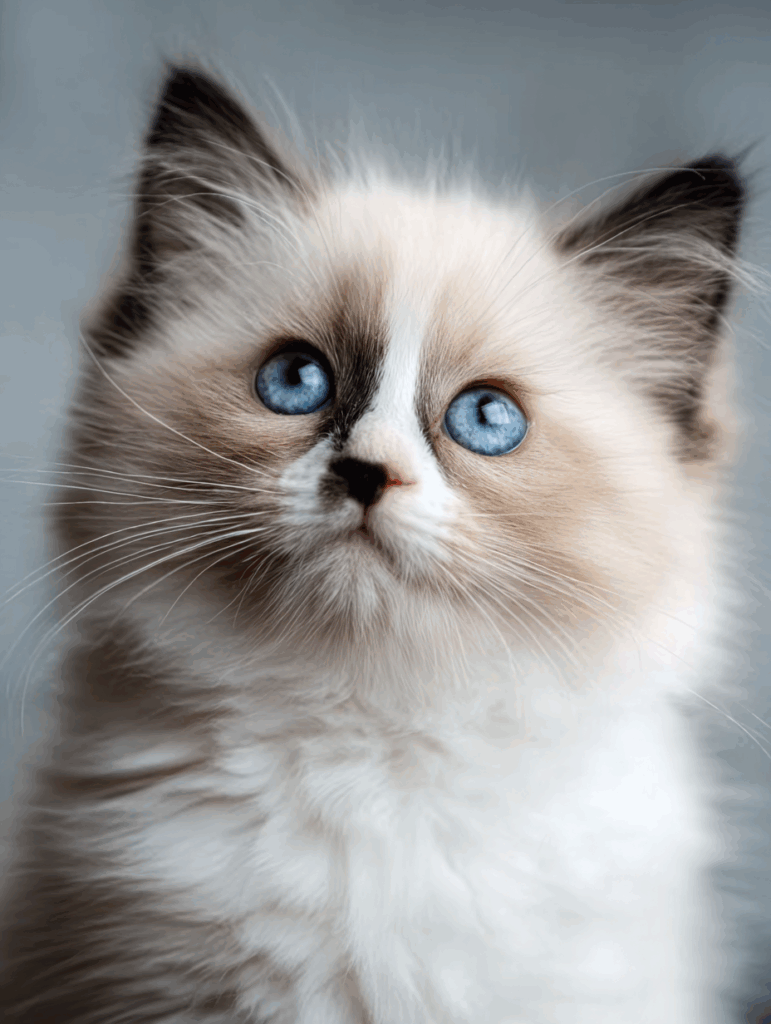
At Almonte Cats, each kitten is:
- TICA and CFA registered from fully health-tested Ragdoll parents
- Raised in-home for gentle, people-loving temperaments
- Vet-checked, vaccinated, and microchipped before going home
We raise only a few litters each year to maintain quality, structure, and true Ragdoll personality.
Reserve early — our kittens are often spoken for before they are eight weeks old.
👉 View Available Ragdoll Kittens & Apply Here
What Is a Lilac Ragdoll?
A lilac Ragdoll carries a pale lavender point color with a warm ivory body. The lilac shade comes from two recessive genes. These genes dilute pigment and create the soft frosty tone. Many people love this pastel look because it feels gentle and refined. True lilac displays a cool lavender color with a slight pink tint. No other Ragdoll color matches this tone.
Lilac is the lightest recognized Ragdoll color. It appears softer and lighter than blue. It also appears cooler and more muted than chocolate. Lilac Ragdolls look unique in every stage of life. Their tone stays soft from kittenhood through adulthood.
Lilac Ragdoll Genetics Explained
Lilac Ragdolls carry the genetic code “bbdd.” This code means the cat carries chocolate and dilution genes. Both parents must pass these recessive genes to produce lilac kittens. Breeders confirm this with DNA testing. They test each adult before breeding.
Producing lilac kittens requires correct pairings. Breeders must match cats with predictable genetics. They also must protect health, temperament, and structure. Responsible breeders never chase rare colors without preserving the breed standard. Lilac breeding requires patience and planning.
This genetic complexity makes lilac Ragdolls rare. Many breeders do not work with chocolate lines. Even fewer carry both chocolate and dilution. This keeps lilac numbers very low each year.
How Lilac Differs From Blue and Chocolate in Ragdolls
Lilac Ragdolls often get confused with blue or chocolate Ragdolls. The differences are clear once you know what to check.
Blue Ragdolls carry a cool gray tone. Their points look slate gray. Their bodies look bluish ivory.
Chocolate Ragdolls carry a warm tone. Their points show light brown shades. Their bodies appear creamy.
Lilac Ragdolls carry a frosty lavender tone. Their points look pale, cool, and slightly pink. Their bodies stay warm ivory.
Lilac appears much lighter than blue. Lilac also appears cooler than chocolate. These differences help you identify true lilac kittens early.
Lilac vs Other Ragdoll Colors Graph
“Lilac vs Blue vs Chocolate vs Seal: Quick Comparison Chart”
| Trait | Lilac Ragdoll | Blue Ragdoll | Chocolate Ragdoll | Seal Ragdoll |
|---|---|---|---|---|
| Point Color | Pale lavender. | Cool slate gray. | Warm milk chocolate. | Dark brown. |
| Body Color | Warm ivory. | Bluish ivory. | Creamy ivory. | Beige to cream. |
| Genetics | bbdd. | dd with B gene. | bb with D gene. | B gene with D gene. |
| Rarity Level | Very rare. | Common. | Less common. | Very common. |
| Best Pattern Visibility | Colorpoint. | All patterns. | All patterns. | All patterns. |
| Buyer Appeal | Rare pastel tone. | Classic cool tone. | Warm lighter brown. | Bold traditional color. |
| Color Stability | Stays light. | Deepens with age. | Warms slightly. | Darkens strongly with age. |
How to Find a Lilac Ragdoll Kitten for Sale
Lilac Ragdoll cats stay rare, so most buyers start early. Lilac requires two recessive genes, so not many breeders produce this color. Most litters have one lilac kitten or none. This makes lilac kittens for sale very hard to find through general ads or casual breeders.
Lilac point Ragdolls show pure lavender points with no white. Their ears, face, paws, and tail show the pastel shade clearly. Their bodies stay warm ivory. This contrast creates a classic and elegant look. Many buyers love lilac point because the color shows well in all lighting.
Because lilac kittens for sale stay rare, you must work with a breeder who understands color genetics. Ask for DNA proof. Ask for pedigrees. Check photos of the parents. Avoid sellers who guess the color or refuse video calls.
If you want a true lilac Ragdoll kitten, join a waitlist with a breeder who produces confirmed lilac lines. At Almonte Cats, we DNA test our adults, screen for HCM and PKD, and produce limited lilac litters each year. Our waitlist fills quickly because demand stays high.
Request placement on our Ragdoll Kitten waitlist today.
See Our Ragdoll Kitten Reviews
“The lilac coloring looks magical in person.”
⭐️⭐️⭐️⭐️⭐️ – Hannah M., Physical Therapist
“We always loved the soft look of lilac Ragdolls, but our kitten Lavender stole our hearts instantly. Her pastel points look like watercolor, and her temperament is incredibly gentle. She settled into our home with zero stress. Your updates, videos, and clear communication made everything easy.”
“Our lilac Ragdoll boy feels like a dream.”
⭐️⭐️⭐️⭐️⭐️ – Marcus L., Software Engineer
“I searched for a lilac Ragdoll for months and felt discouraged until I found this program. Our boy, Rowan, came home confident, social, and very affectionate. His color grew richer every week, and his blue eyes are stunning. The health testing, transparency, and support were outstanding from start to finish.”
“The lilac points are even prettier than photos.”
⭐️⭐️⭐️⭐️⭐️ – Sophia D., Interior Designer
“Photos cannot capture how beautiful lilac looks in person. Our kitten, Iris, has soft lavender points and the sweetest personality. She follows us everywhere and curls beside me during work. The way these kittens are raised shows in their confidence and calm nature.”
“Our lilac mitted girl has the perfect temperament.”
⭐️⭐️⭐️⭐️⭐️ – Daniel K., Civil Engineer
“We wanted a lilac mitted kitten with clear eye color and a stable temperament. Our girl, Maple, checked every box. She is easygoing, playful, and very affectionate. The breeder answered every question, shared health test results, and made the entire process stress-free.”
“The soft lilac tone makes her look like a storybook kitten.”
⭐️⭐️⭐️⭐️⭐️ – Ashley F., High School Counselor
“Our lilac bicolor kitten looks like she stepped out of a painting. Her lavender ears and pink-tinted nose glow in natural light. Beyond her beauty, she arrived well-socialized and confident. You can tell these kittens grow up in a loving home and receive careful, hands-on attention.”
“Best kitten experience we’ve ever had.”
⭐️⭐️⭐️⭐️⭐️ – Dr. Lucas V., Dermatologist
“As a veterinarian, I see many cats every week, but our lilac Ragdoll from your program stands out by far. She adjusted quickly, plays gently, and loves everyone she meets. Her health records were complete, and her genetics were clearly documented. This is a well-run, quality-focused breeding program.”
Why Are Lilac Ragdolls Rare?
Lilac Ragdolls require two recessive genes. This means both parents must carry chocolate and dilution. Few breeders maintain these genes in their lines. Many programs focus on common colors. Only experienced breeders invest in rare color genetics.
Most catteries produce lilac kittens only once or twice per year. Even when both parents carry the genes, not all kittens will be lilac. Litters may produce only one lilac kitten. Some litters produce none.
This low supply meets high demand. This creates waitlists for lilac Ragdoll kittens every year.
Why Lilac Ragdoll Breeders Often Have Waitlists
Lilac Ragdolls stay in high demand. Many families request pastel colors because they want a rare, gentle look. Breeders cannot predict how many lilac kittens will appear each year. This uncertainty creates long waitlists.
Most reputable breeders match lilac kittens to approved families before public listings. These kittens rarely reach the “available” stage. Many buyers apply months before breeding plans begin.
If you want a lilac Ragdoll kitten, join a breeder’s waitlist early. This increases your chances of securing the color you want.
Lilac Ragdoll Temperament
Lilac Ragdolls share the calm, affectionate nature of the breed. These cats enjoy family interaction. They follow their people from room to room. They relax near their owners and settle easily in new spaces.
Lilac Ragdolls respond well to handling. They tolerate brushing, nail trimming, and gentle play. Their personalities suit homes with children or other pets. They rarely show aggression or fear when socialized properly.
Many lilac Ragdolls seem extra sweet. This happens because breeders who focus on rare colors often prioritize temperament strongly. They protect gentle behavior through selective breeding. This results in predictable and stable personalities.
Are Lilac Ragdolls More Affectionate?
Lilac coloring does not change personality. Breeding lines influence temperament. Many lilac lines come from calm, affectionate stock. This produces kittens who bond deeply with their families.
Lilac Ragdolls enjoy closeness. They sit near their people, sleep beside them, and form strong attachments. They enjoy routine and soft household environments. And they like to hang out with you at the end of the day.
You can expect a sweet, relaxed companion when you choose a lilac Ragdoll kitten from a responsible breeder.
Lilac Ragdoll Kitten Pricing
Lilac Ragdoll kittens cost more because they are rare and hard to produce. Most pet-quality lilac kittens cost $3,000 to $4,500. Show-quality lilac kittens may cost $5,000 to $7,000 depending on pedigree and type.
Lilac Ragdoll Kitten Pricing Breakdown
| Category | Price Range | Notes |
|---|---|---|
| Pet Quality Lilac | $3,000 to $4,500 | Healthy, purebred, standard type |
| Show Quality Lilac | $5,000 to $7,000 | Strong type, structure, and genetics |
| Breeding Rights | Varies | Offered only to approved programs |
| Reservation Fee | $300 to $500 | Applied to final cost |
| Annual Availability | Low | Most kittens reserved early |
Several factors influence price:
• Rare genetics
• Health testing
• Pedigree quality
• Pattern and structure
• In-home socialization
• Veterinary care
• Limited annual availability
Ethical breeders invest heavily in their programs. This investment reflects in their prices. Cheap lilac kittens often come from untested lines or scams.
Why Lilac Ragdolls Cost More
The genetic requirements increase the cost. Breeders must maintain chocolate and dilution in their lines. This takes years of work. DNA testing also adds ongoing expenses.
Lilac line development often requires imported cats. Importing involves travel, registration, veterinary requirements, and quarantine. Breeders invest heavily to maintain lilac genetics in the United States.
Rare colors also create higher demand. Families often wait months for a lilac kitten. These kittens sell quickly and never sit available.
This combination of rarity, testing, pedigree investment, and demand raises the price.
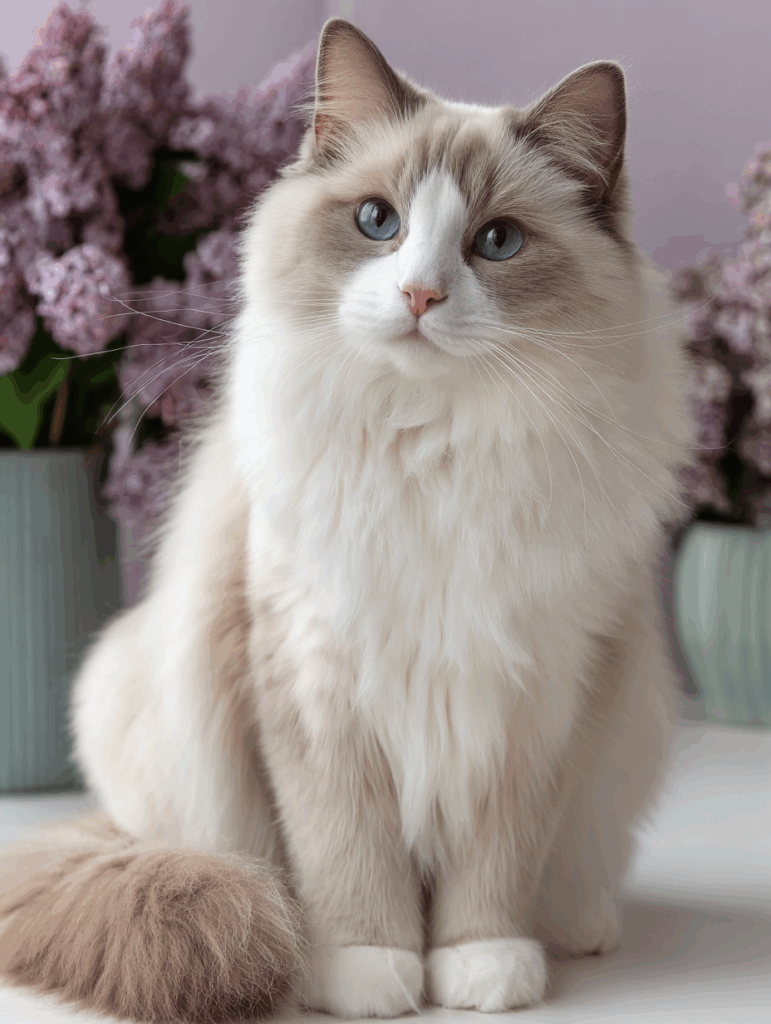
Lilac Ragdolls at Almonte Cats
At Almonte Cats, we raise lilac Ragdoll kittens in our home. We focus on structure, temperament, and correct lavender tone. Our kittens stay with us until they go to their forever homes.
We handle kittens daily. We introduce household sounds, grooming tools, toys, and gentle handling. These habits create confident and social kittens. Each kitten receives veterinary care, vaccinations, and microchipping before going home.
- We screen for HCM and PKD.
- We provide registration, and health guarantees.
- We support families long after adoption.
- We DNA test all breeding adults.
- We produce limited lilac litters each year.
- Waitlist placement is the best way to secure a kitten.
Apply for a Ragdoll Kitten Here
Lilac Bicolor, Lilac Mitted, and Lilac Colorpoint
Lilac Ragdolls come in three main patterns. Each pattern highlights the pastel tone differently.
Lilac Bicolor
Lilac bicolor Ragdolls show an inverted V mask and white legs. Their points show soft lilac on ears and tails. This pattern offers a striking contrast between white and pastel. Many buyers love this look.
Lilac Mitted
Lilac mitted Ragdolls have white mittens, a white chin, and lilac points. Their bodies stay ivory. This pattern feels balanced and classic.
Lilac Colorpoint
Lilac colorpoints show pure lilac on all points with no white. This pattern displays the full lavender tone clearly. Many families choose this pattern to enjoy the strongest color visibility.
Lilac Pattern and DNA Summary Graph
| Pattern | Description | DNA Notes | Appearance | Rarity |
|---|---|---|---|---|
| Lilac Colorpoint | Pure lilac points with no white. | Requires bbdd genetics. Shows lilac clearly. | Ears, tail, face, and paws show soft lavender. | Rare |
| Lilac Mitted | Lilac points with white mittens and a white chin. | Must carry bbdd plus the white spotting gene. | Balanced look with clean white accents. | Very rare |
| Lilac Bicolor | White inverted V mask with lilac ears and tail. | Requires bbdd plus high-white pattern genetics. | Strong contrast between white and pastel lilac. | Extremely rare |
| Lilac Lynx | Lilac points with faint striping. | bbdd plus lynx pattern. | Soft tabby lines on pastel lilac tone. | Rare |
How Lilac Ragdoll Kittens Develop: Week-by-Week Timeline
Lilac Ragdoll kittens experience significant color changes during the first year of life. Like all pointed cats, they are born white because their temperature-sensitive pigmentation has not yet developed. Their lilac color begins to appear slowly over time, making the color development process one of the most exciting aspects for new owners. Understanding the developmental timeline helps families know what to expect as their kitten grows.
Birth to 2 Weeks
All lilac Ragdoll kittens are born completely white. At this early stage, even experienced breeders cannot confirm color. Their eyes are closed, their coats are soft and fluffy, and pigmentation has not yet activated. During these first two weeks, kittens remain mostly in the nest, nursing and sleeping.
3 to 6 Weeks
The first signs of lilac appear on the ears and tail. The coloration is so faint that it may look like a soft shadow. Under natural light, a faint lavender cast begins to show. The body remains ivory. This is also when breeders begin to make their first color predictions, although exact shade identification still requires more time.
6 to 12 Weeks
Lilac becomes more noticeable, especially on the mask and tail. By 10 weeks, most breeders can confirm whether the kitten is lilac or blue. In lilacs, the tone remains very pale and cool with a gentle pink-lavender tint. By 12 weeks, the color is defined enough for placement into pet or show homes.
12 Weeks to 1 Year
Lilac points continue deepening gradually but always remain pastel. The body stays very light, often the palest among all Ragdoll colors. Eye color develops into a deeper blue during this stage, especially in lines with strong eye-color genetics.
This predictable pointed color progression allows lilac ragdoll breeders to identify lilac accurately while providing buyers with weekly updates that show the kitten’s transformation.
Lilac Ragdoll Development Timeline
| Age | Lilac Color Changes |
|---|---|
| Birth to 2 Weeks | Kitten remains fully white. No pigment visible. |
| 3 to 6 Weeks | Lavender tint appears on ears and tail. |
| 6 to 12 Weeks | Points show clear lilac tone. Color becomes defined. |
| 12 Weeks to 1 Year | Color deepens slightly but stays pale pastel. |
| Adulthood | Lilac remains soft, cool, and frosty. |
How to Choose a Reputable Lilac Ragdoll Breeder
Choosing the right breeder protects your investment and your kitten’s health. Reputable breeders understand lilac genetics.
- They follow strict health protocols.
- They raise kittens inside their homes.
- They offer photos, and videos of lilac ragdoll kittens for sale.
Start by checking registration. Ethical Ragdoll breeders register with TICA or CFA. Registration proves that your kitten comes from purebred lines. A breeder should show registration records without hesitation.
Ask about DNA testing. Breeders must test for chocolate and dilution genes. They must verify the bbdd genetics behind lilac. They should also test for HCM and PKD. These tests prevent hereditary issues.
Choose kittens from in-home setups. Kittens should grow up around people and household activity. They shouldn’t be living in cages or barns. In-home raised kittens show calmer behavior and better social skills.
Review the contract. A responsible breeder offers a clear health guarantee.
- They list all included veterinary care.
- They discourage declawing
- They outline your rights and their responsibilities.
- They communicate consistently and honestly.
A good breeder cares about placing kittens in suitable homes. Breeders who care ask questions about your lifestyle. They guide you through the adoption process. They want long-term success for every kitten.
Choosing the right breeder gives you a healthy, well-adjusted lilac Ragdoll kitten.
Red Flags When Searching for Lilac Ragdoll Kittens for Sale
Many sellers mislabel kittens as lilac to increase prices. Protect yourself by learning key red flags. These signs warn you to walk away.
Avoid breeders who cannot explain lilac genetics. Real breeders understand recessive genes. They know how to produce true lilac ragdoll kittens for sale. They do not rely on guesswork.
Stay away from sellers who refuse video calls. Scammers use stolen photos. They avoid showing live proof of kittens or mothers. A real breeder will show their cats without hesitation.
Be cautious if the price seems unusually low. Lilac Ragdolls require rare genetics and testing. Cheap prices usually signal poor breeding or deception.
Avoid breeders who offer early pickup. Kittens must stay until at least 12 weeks. Early release harms development and immunity.
Walk away if the breeder refuses registration. Registration should never be optional. Lack of papers suggests mixed lines or dishonest practices.
Trust your instincts. Responsible breeders treat you respectfully. They share information freely. They provide clear records. Anything less is a warning.
How to Reserve a Lilac Ragdoll Kitten for Sale
Lilac Ragdoll kittens sell quickly. Follow these steps to secure one.
Step 1: Apply with a reputable breeder.
This helps the breeder match you with the right kitten. Many breeders only place kittens through approved applications.
Step 2: Join the waitlist.
Most lilac kittens get reserved before birth. Waitlists offer the best chance of getting your preferred pattern and gender.
Step 3: Submit your reservation fee.
This fee holds your place in line. Ethical breeders apply the fee to the final price.
Step 4: Receive updates.
Breeders send photos and videos during development. You watch your lilac Ragdoll grow each week.
Step 5: Select your kitten.
Many breeders allow picking after color becomes clear. Some match kittens based on temperament.
Step 6: Bring your kitten home at 12 weeks.
Your kitten leaves fully vet-checked, vaccinated, and microchipped.
This process keeps everything organized and predictable.
FAQ about Lilac Ragdoll Kittens for Sale
1. Are lilac Ragdoll kittens for sale rare?
Lilac Ragdolls stay rare because they require two recessive genes. Few breeders maintain these specific genetics. Many litters produce only one lilac kitten or none. Read more about finding a Ragdoll Breeder near me here.
2. Do lilac Ragdolls stay light?
Yes. Lilac keeps a pale lavender tone for life. The color deepens slightly but stays soft and frosty. You can compare lilac to other light Ragdoll colors here. See Lilac Ragdolls for more color info.
3. Do lilac Ragdolls always have blue eyes?
Yes. All pointed Ragdolls must have blue eyes. Lilac lines often show very bright blue tones. Eye color improves with maturity. Learn more in my Ragdoll growth stages post.
4. Are lilac Ragdolls good with kids?
Yes. Lilac Ragdolls tend to show calm and gentle behavior. They handle respectful children well. They enjoy routine and steady homes. Read more about Ragdoll temperament and behavior here. See Ragdoll vs British Shorthair for cat temperament comparisons.
5. How long does lilac color take to show?
Lilac develops slowly. It starts showing on ears and tails around three weeks. Full color becomes clear around twelve weeks. You can view color progression photos in my weekly Ragdoll kitten guide.
6. Are lilac Ragdolls healthy?
Yes. Lilac does not harm health. Good breeders test for HCM and PKD to protect lines. Healthy breeding programs keep strong genetics. Learn more about Ragdoll health testing here.
7. Do lilac Ragdolls shed?
Yes. They shed lightly throughout the year. Regular brushing controls loose hair and reduces matting. Nutrition also affects coat health. You can read my Ragdoll grooming guide here.
8. Do lilac Ragdolls need grooming?
Yes. Brush them two to three times weekly. This keeps their coats smooth and clean. Grooming also builds trust. Get full grooming steps in my Ragdoll grooming post.
9. Are lilac Ragdolls good in apartments?
Yes. Their calm nature fits apartment life well. They enjoy soft play, window views, and companionship. They need daily interaction but stay low-energy. You can learn more in my Ragdoll living spaces guide.
10. How long do lilac Ragdolls live?
Most live twelve to seventeen years. Healthy lines often reach the higher end of this range. Diet and veterinary care matter a lot. Read How Big do Ragdoll Cats Get?
11. Can I ship a lilac Ragdoll kitten?
Yes. Many breeders offer safe transport options. Use trusted pet nannies or airline programs. Always ask the breeder which method they use. Learn more about shipping kittens here.
12. How can I confirm a kitten is lilac?
Ask the breeder for DNA testing proof. True lilac requires bbdd genetics. Photos alone cannot guarantee color. See my color verification guide here. Ragdoll Cat Colors and Patterns
13. Do lilac Ragdolls get along with dogs?
Yes. They often adapt well to calm dogs. Slow introductions build trust and comfort. Their gentle nature helps them adjust easily.
14. Do lilac Ragdolls have strong personalities?
Lilac Ragdolls stay sweet and steady. They enjoy bonding and daily routine. They adapt quickly to family life. See personality comparisons in my Ragdoll temperament post.
15. What should lilac Ragdoll kittens eat?
They need a high-quality kitten food. Choose formulas with strong protein sources. Avoid frequent diet changes. See my Ragdoll nutrition guide here.
16. How big do lilac Ragdolls grow?
They reach ten to twenty pounds as adults. Males grow larger than females. Growth continues for three to four years. Read my full Ragdoll growth stages post here. (link to growth chart)
17. Can lilac Ragdolls compete in cat shows?
Yes. Lilac is an accepted Ragdoll color. Judges look for correct tone and structure. Show-quality lines score very well. Learn more in my Ragdoll Cat Breed Standard guide.
18. Do lilac Ragdolls cost more?
Yes. Lilac genetics remain rare. Breeders invest heavily in DNA mapping and health testing. This increases price. Read my Ragdoll pricing guide here.
19. How many lilac kittens appear in a litter?
Lilac Ragdoll kittens remain extremely limited because they require two recessive genes. Even when both parents carry chocolate and dilution, the outcome stays unpredictable. A typical litter may produce one lilac kitten or none. Some litters surprise breeders and produce two, but that is rare. Genetics decide the color outcome, not the breeder. This makes lilac Ragdolls some of the hardest kittens to plan for.
20. When should I join a lilac Ragdoll waitlist?
Join early. Waitlists fill before kittens arrive. Most lilac kittens never reach public listings. Learn how the waitlist works here. Kitten Application Here.
How can I reserve a Ragdoll kitten?
Submit an adoption application on the Almonte Cats website. Approved families are matched by temperament and color preference. Early reservations are recommended due to limited availability.
See our Available Ragdoll Kittens for Sale Here.
Related Colors and Patterns
- Black Ragdoll Cat Color
- Bicolor Ragdoll Kitten for Sale
- Chocolate Point Ragdoll Color
- Black and White Tuxedo Ragdolls
- Lilac Point Ragdoll
- How Much Does A Cinnamon Ragdoll Cost?
- Lynx Pattern Ragdoll Guide
- Blue Mitted Ragdolls
Summary
The Lilac Ragdoll represents a delicate, rare color of the Ragdoll breed — a perfect blend of symmetry, contrast, and personality.
From their gentle blue eyes to their plush white bellies, Ragdoll kittens are so freaking cute.
At Almonte Cats, we raise Ragdolls for families who value beauty, temperament, and trust. Every kitten carries our promise of health, love, and lifelong support.
Sources & References
- The International Cat Association (TICA). “Ragdoll Breed Standard.”
https://tica.org/breeds/browse-all-breeds?view=article&id=859- Cat Fanciers’ Association (CFA). “Ragdoll Cat Breed Profile.”
https://cfa.org/ragdoll/- Ragdoll Fanciers Club International (RFCI). “Ragdoll Color and Pattern Guide.”
https://rfci.org/- Messybeast Cat Genetics. “Color Genetics in Cats – Pointed, Bicolor, and Mink Patterns.”
https://www.messybeast.com/genetics.htm- 10 Things to Know About Ragdolls
- The Spruce Pets. “Ragdoll Cat: Breed Facts and Care Tips.”
https://www.thesprucepets.com/ragdoll-cat-breed-profile-554021- Almonte Cats. “Our Bicolor Ragdoll Breeding Program.”
https://almontecats.com

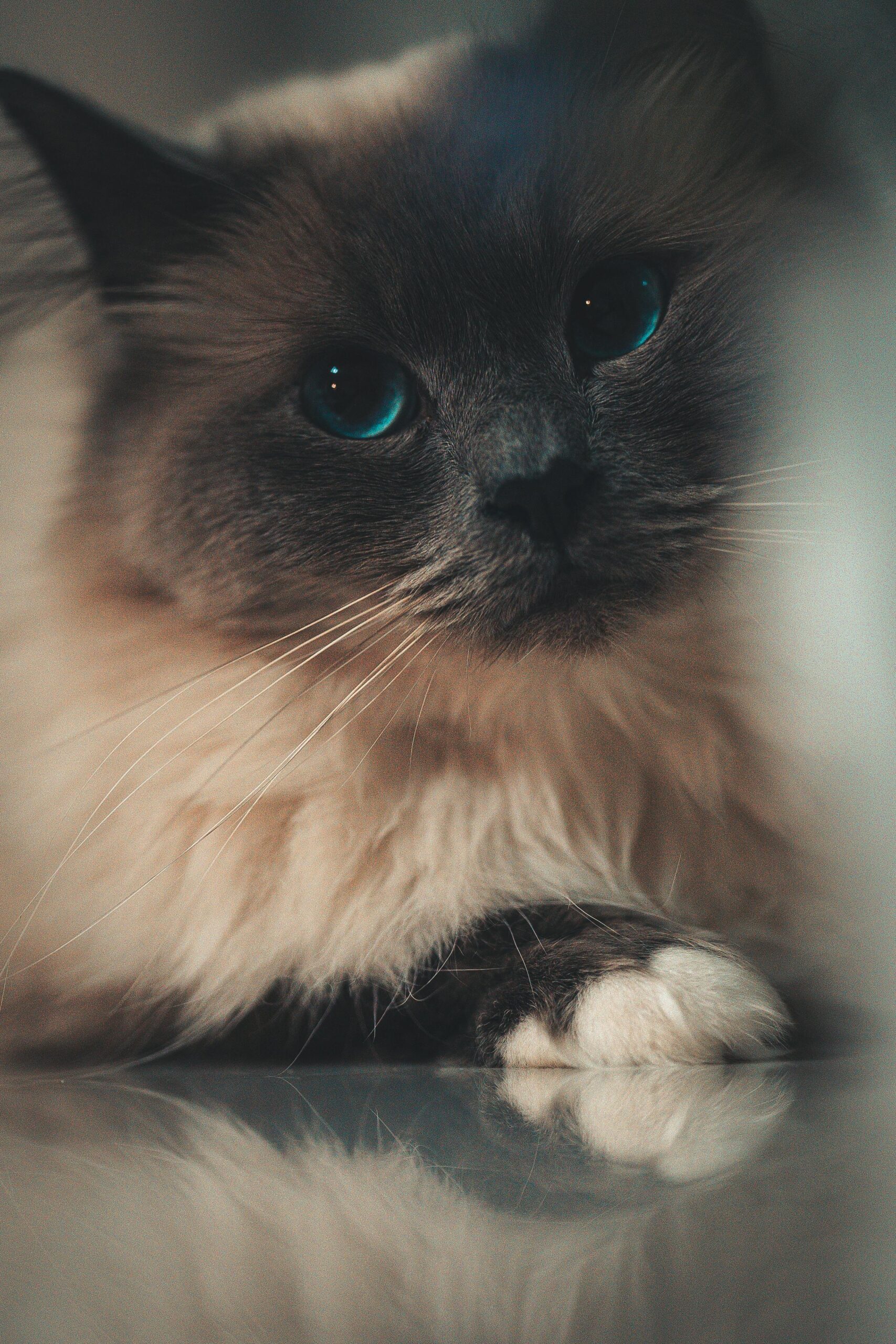
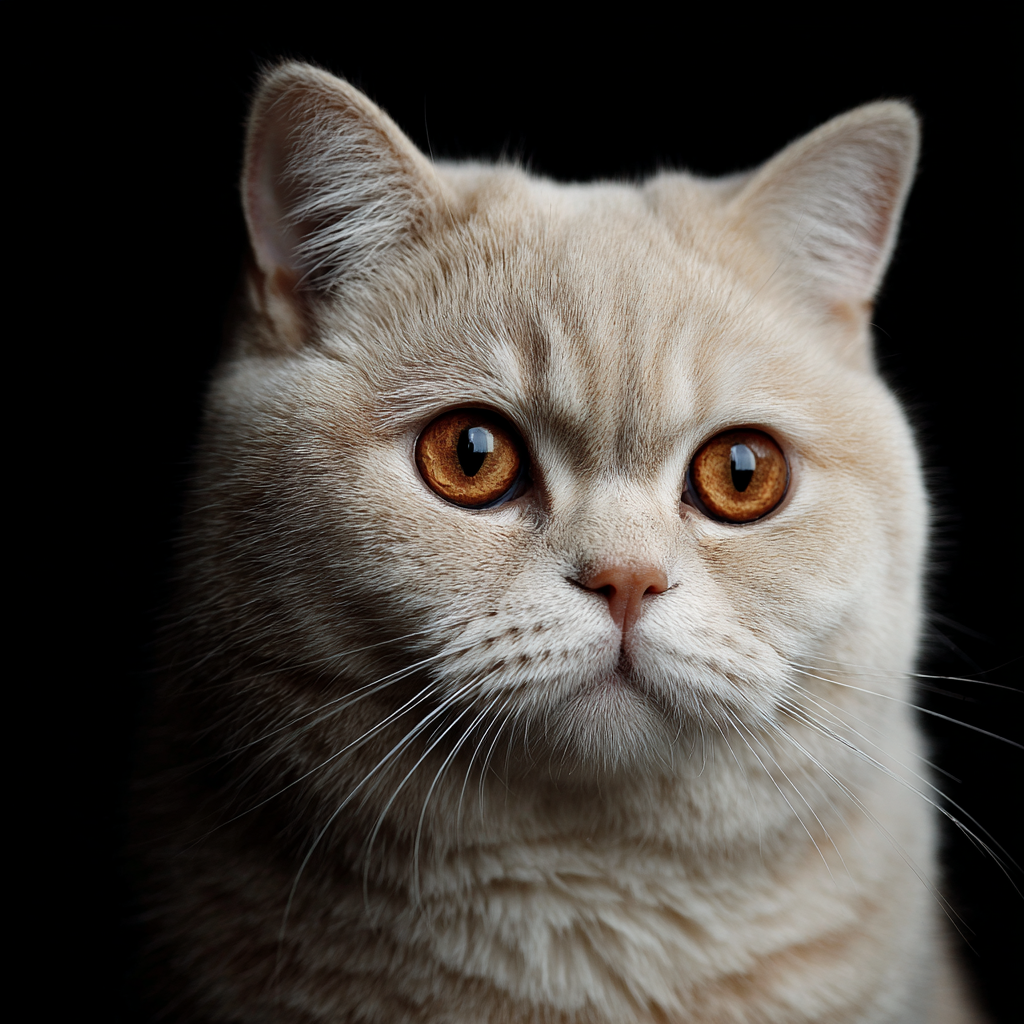
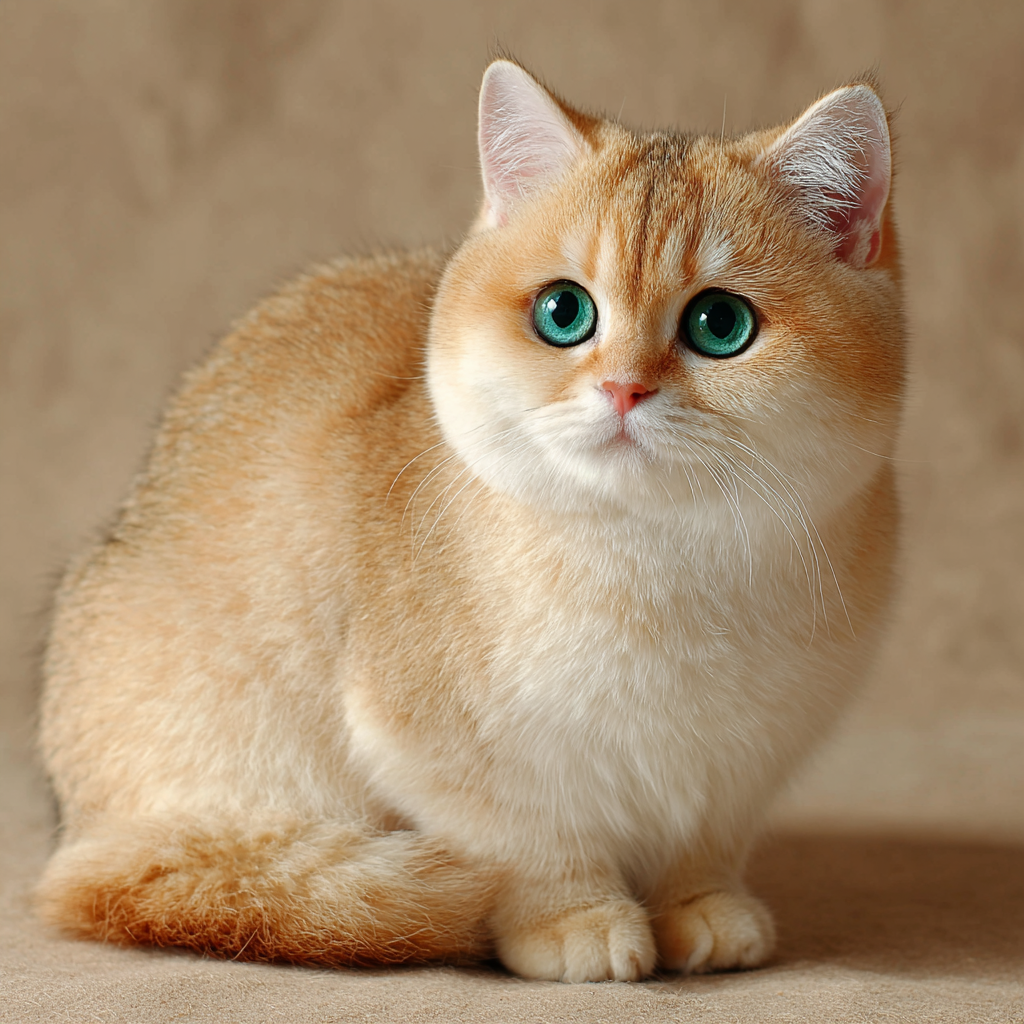
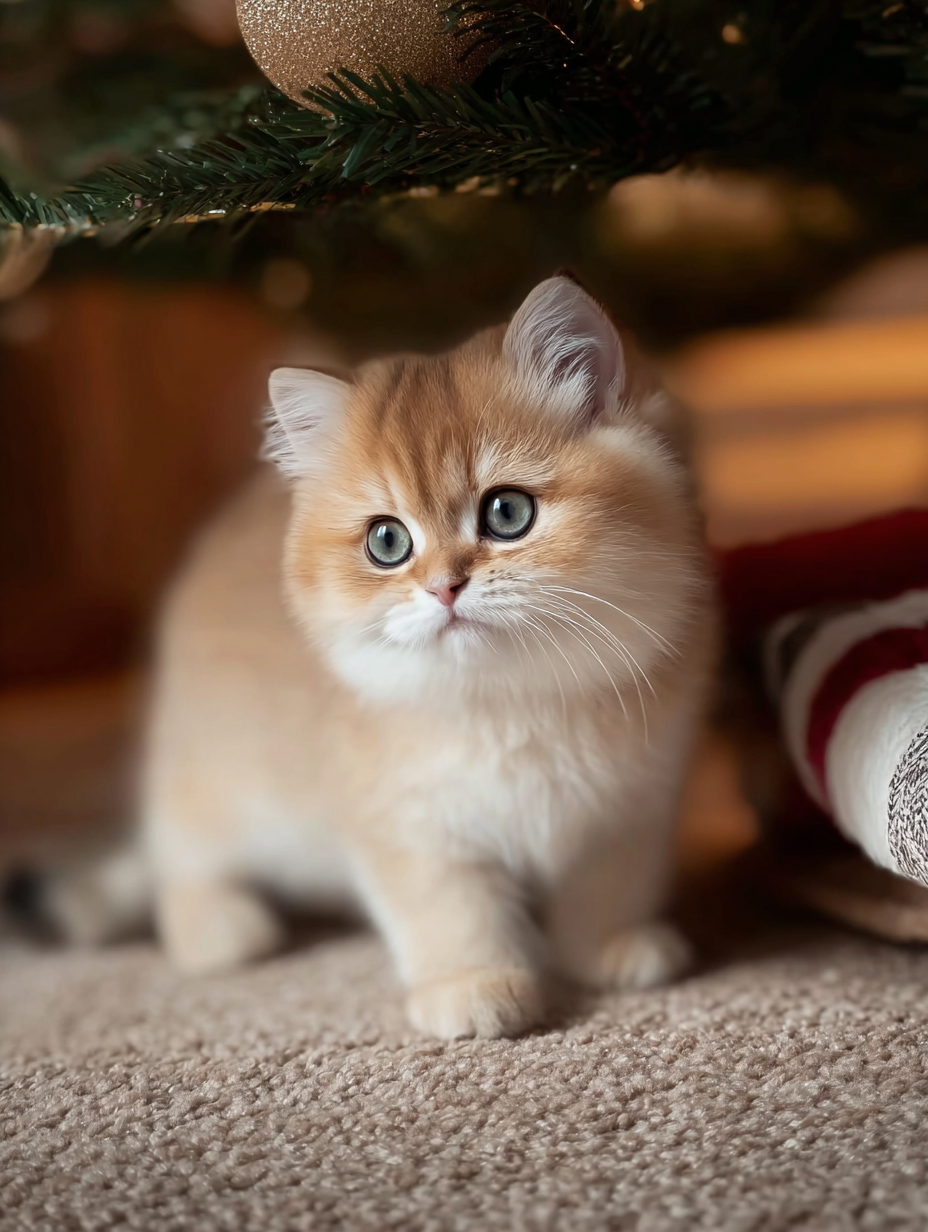
Read the Comments +